Genus Naja Higher classification Cobras | ||
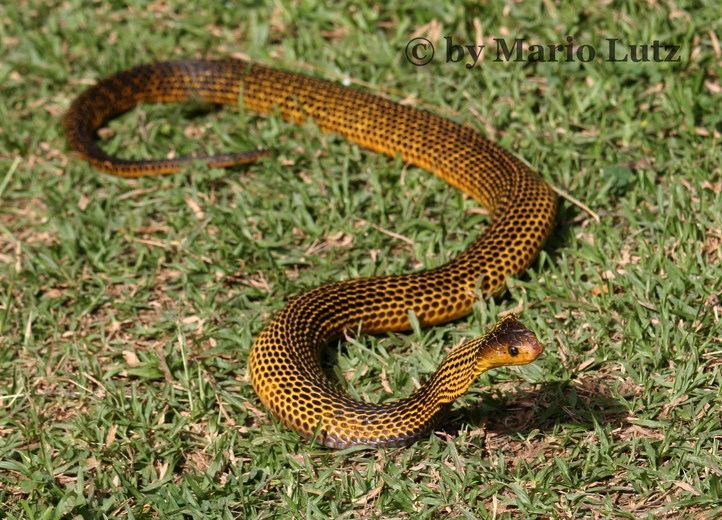 | ||
Similar Cobras, Snake, Philippine cobra, Indochinese spitting cobra, Equatorial spitting cobra | ||
Samar cobra
The Samar cobra (Naja samarensis) also called Peters' cobra, southern Philippine cobra or Visayan cobra, is a highly venomous species of spitting cobra native to the Visayas and Mindanao island groups of the Philippines.
Contents
- Samar cobra
- Samar cobra feeding struggle
- Description
- Scalation
- Distribution and habitat
- Behavior
- Venom
- References
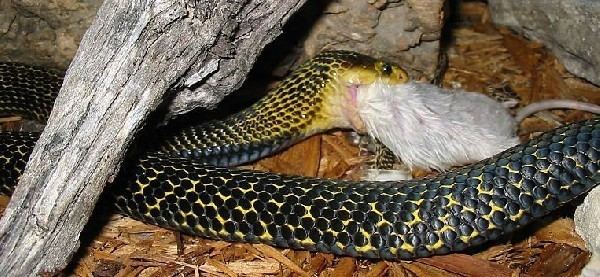
Samar cobra feeding struggle
Description
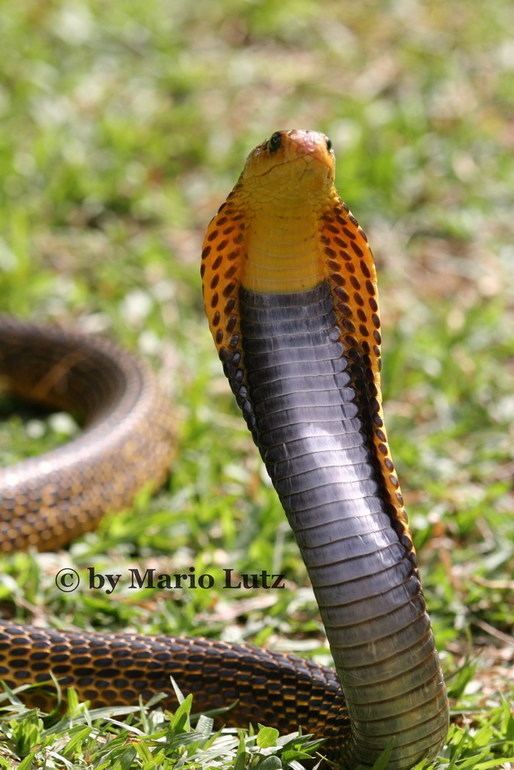
The Samar cobra is a species of spitting cobra that can grow up to 1.4 meters in length. Their coloring varies from a black and yellow to green.
Scalation
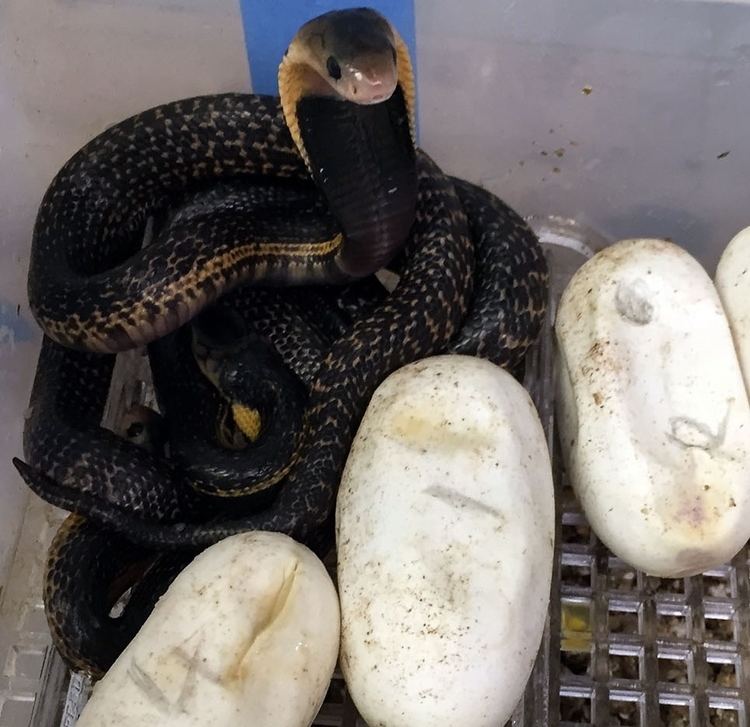
There are 17-25 scale rows around the hood, 17-19 ahead of mid-body; 161-184 ventrals, 41-52 subcaudals, basal pairs sometimes undivided.
Distribution and habitat
The Samar cobra is endemic to the southern Philippines. Specifically, the Visayas and Mindanao island groups.
Habitat can vary widely from mountainous jungle to tropical plains. They can live close to human settlements.
Behavior
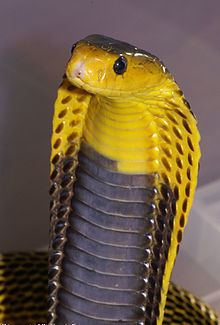
Like the Philippine cobra (Naja philippinensis), the Samar cobra feeds mostly on rodents. They will also prey upon frogs and reptiles. Since their main food source is attracted to rice paddies and human settlements, this species often comes into conflict with people.
Venom
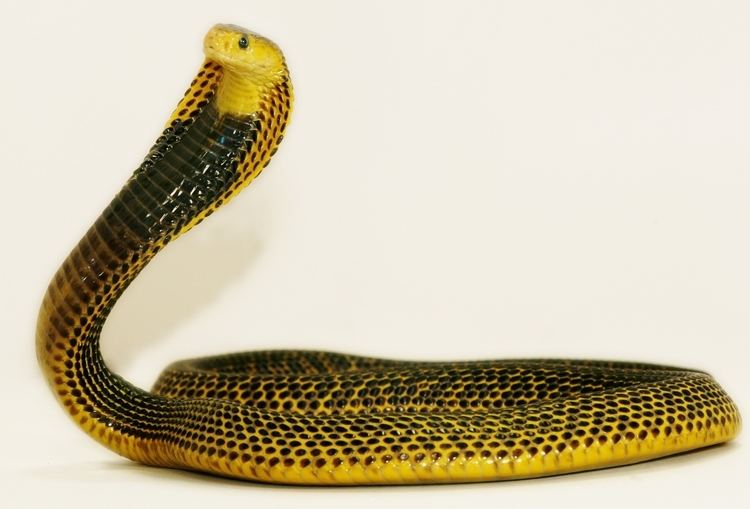
The Samar cobra's venom is a potentially deadly neurotoxin, with cytotoxic properties as well. Envenomations can result in respiratory distress and paralysis, as well as considerable tissue necrosis around the bite site. They are noted for their nervous behavior, and are quick to strike as well as to spray venom, which they generally aim towards the face and eyes. If venom gets in the eyes, it causes extreme pain and mechanical damage to the eyeball. If not properly flushed out, it can result in permanent blindness due to its tissue destroying properties. Antivenin for the Samar cobra is produced in the Philippines, but is not widely available due to this species' restricted distribution and thus, relatively low numbers of individuals.
